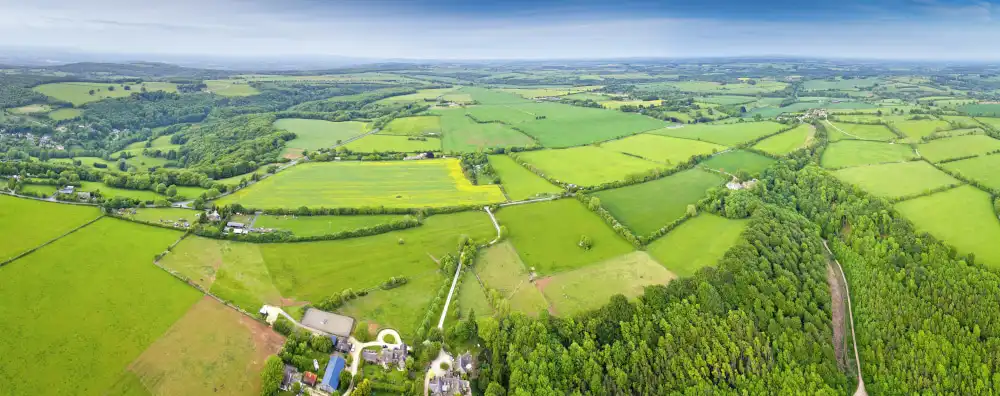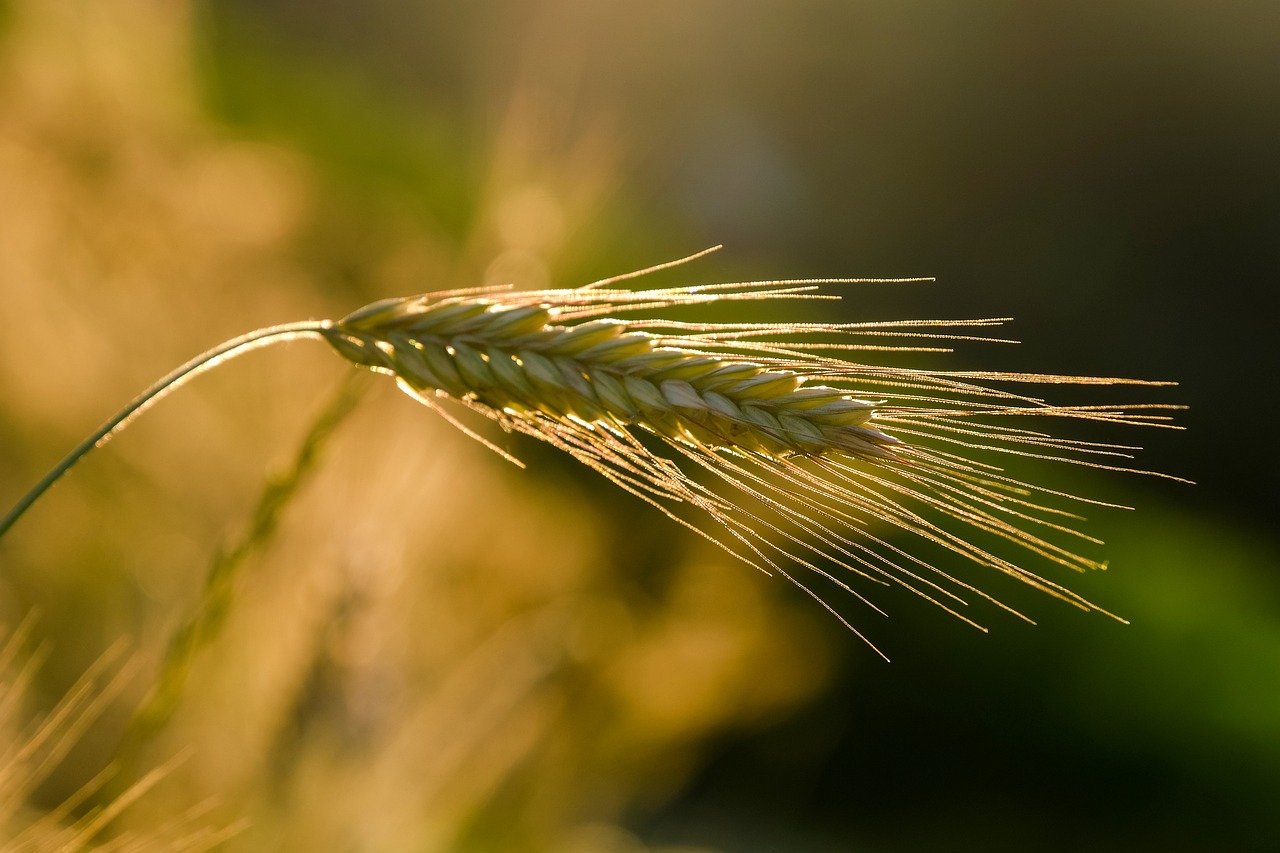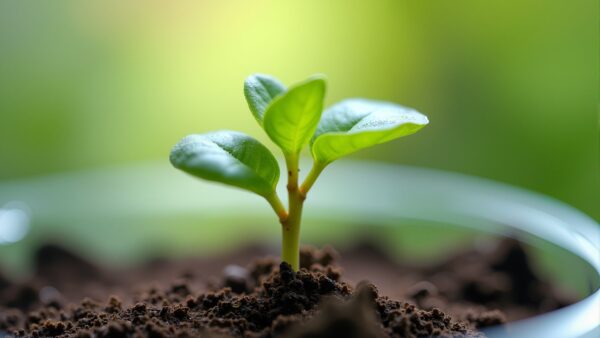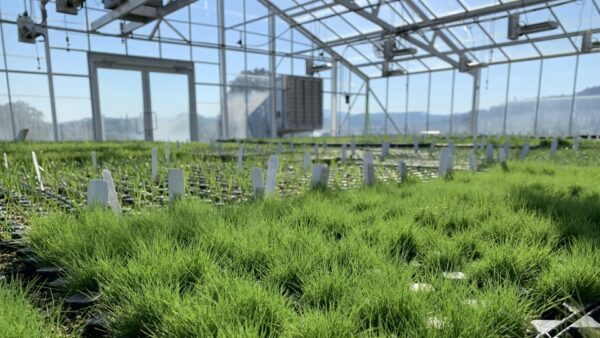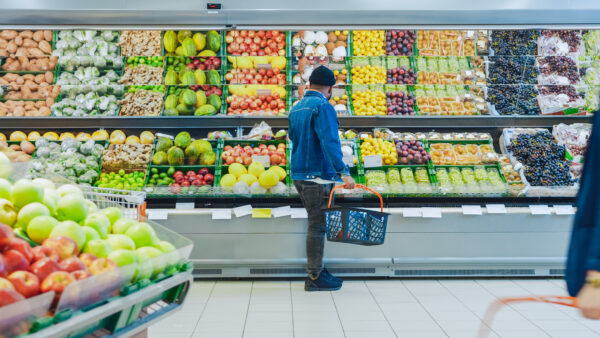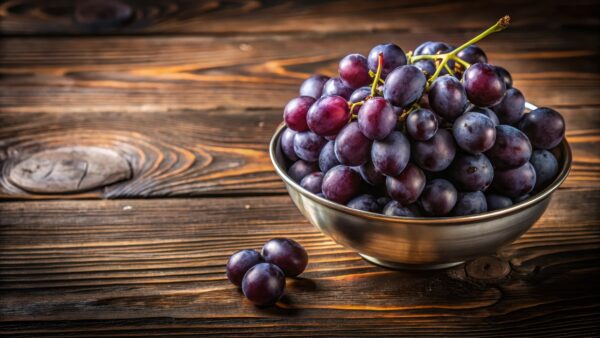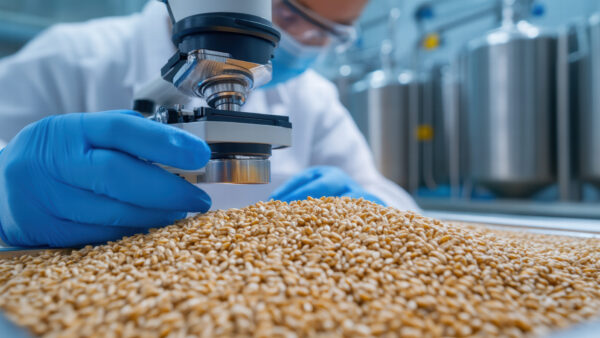Almost 50% of the EU territory is covered by farmland (both arable land and permanent grassland) leaving a key role for agriculture to play in land management and bestowing a big responsibility in the preservation of natural resources. The EU Commission calls the desired relationship between agriculture and the environment “sustainable agriculture” and calls for management of natural resources in a way which ensures that their benefits are also available for the future. European Seed took a deep dive into Sustainable Agriculture and sat down with Marc Cornelissen, Sustainability Lead for Seeds and Traits at BASF, and President of the European Technology Platform (ETP) “Plants for the Future” to get his take on the topic. This is the second article in the two-part series on Sustainable agriculture in Europe.
Disclaimer: The views expressed in this interview article are those of the author, and do not necessarily reflect the views of BASF
ES: Marc, sustainable agriculture is not only good for the environment, but also has several other benefits. Can you give some examples?
MC: Indeed, a transition to sustainability is commonly associated with environmental benefits. As stated in the first communication of the Green Deal, this transition is about a culture shift and has at least a 30-year time frame. Whereas the endpoint may sound revolutionary, the migration to sustainability will need to proceed evolutionary so that at all times a changing societal demand is met by the output of a changing supply chain. This transition will encompass a rejuvenation of the entire agricultural value chain: we will see an increased incorporation of new technology, of digital approaches, of high-profile jobs, of new value propositions and business models, and of new product types leading to the formation of new industry structures.
[tweetshare tweet=”The transition to sustainability will encompass a rejuvenation of the entire agricultural value chain.” username=”48a09af669efbec6d6dde105755d3b55″]
Moreover, such transition may lead to a new generation of tech-savvy farmers, which would breathe new life into a profession that is slowly ageing: in 2016 about one third of the EU farmers were over the age of 651. We may also anticipate a greater diversity of products the consumer is already familiar with and that offer benefits in nutrition, taste and other sensory qualities. In addition, future agriculture is expected to provide a totally new range of biorefining products that are deeply embedded in the bioeconomy and range from large volume chemical precursors to high-end materials for manufacturing or medical applications.
A main task I see is to get the communication on this topic streamlined: we should think in line with the 2050 goals of the Green Deal, and make near-time opportunities and situations more tangible: What does digital farming anno 2025 and 2030 mean? How to deal with biorefining options anno 2030? What skillsets would an EU farmer need by 2030? What would be the main concerns of NGOs by 2030? Getting a grip on how the new world may unfold, would create timely engagement of entrepreneurs, help direct risk funding and policy development, and pave the way for new directions in education. There are ample short-term actions we could take today to make the future of agriculture promising and that could address several of the negative impacts on the environment and be at the basis of a flourishing bio-based economy offering welfare to society.
ES: In terms of genetics and plant breeding, what are the main changes that need to be made?
MC: The lasting goals of plant breeding are known as “yield”, “yield” and “yield”, and a farmer’s move to more sustainable practices, is pro forma not changing this. Farm productivity is the result of a complex equation between choice of crop genetics, seed quality and preparation, field conditions, resource availability, pest and disease occurrence, applied agricultural practices, weather, both on a day-to-day level and on a climate level, and historic farming choices. The challenge is thus to decompose “farm productivity” and derive insight into which aspects have the greatest impact on sustainability, can be technically approached by breeding and/or agronomy, and offer a positive economic perspective.

As discussed above, there are lasting merits in improving yield and in reducing input requirements to lower non-fossil based GHG emissions. But as a way forward, targets are ideally derived from Life Cycle Analysis (LCA) metrics that have predictive value for both productivity and sustainability, and that take into account location-specific priorities. While waiting for a proper LCA-based benchmark to become publicly available, targets may develop already around requirements for soil, water and nutrients, and, most simply said, translate LCA parameters into actionable breeding and agronomy targets so that progress becomes measurable and communicable.
Personally, I would expect that yield stability becomes in future the key concern for farmers. Climate change and increased weather volatility will alter the condition of the fields, lead to an accelerated migration of diseases and pest, and, equally important, put an unprecedented stress on crops to handle volatile changes with greater extremities in e.g., sunlight, temperature, wind, humidity and water. Both the volatility and the greater extremities pose challenges to breeders, as the solution asks for a sophisticated and unprecedented control of e.g., stomata, roots, pigments and wax-layers.
[tweetshare tweet=”To deal with increased weather volatility plant breeders will need to work on a sophisticated and unprecedented control of stomata, roots, pigments and wax-layers.” username=”48a09af669efbec6d6dde105755d3b55″]
It appears to me that in breeding it will be critical to leverage maximally in-depth insights about how genetics and biological processes determine the decision-making in the different crops when grown in different geographies and under different conditions, and to derive from there predictive breeding starting points. Along the same lines I see that the speed with which diseases and pest geographically migrate, is a multiple faster than today’s breeding can address. Also, here there is a benefit from deploying in depth know-how on the biology and genetic make-up of pests, diseases and crops to derive smart breeding starting points. In this respect it would be great if state-of-art biological information would be presented in a format that is better accessible for use in breeding, and that breeders could make use of the most advanced new breeding technologies such as gene editing, as these would enable the development of the best performing varieties in the shortest time frame possible.

Figure 3. A win-win proposition for public and private innovators: an EU-wide virtual public-private breeding workflow with growing scope and predictive value by integrating outcomes from science and breeding in a data format of use for both parties. Public science may integrate past and current outcomes from e.g., genetics, biology, environmental conditions and soil, whereas private breeders may integrate outcomes and cultivation conditions from breeding experiments using such data. Artificial Intelligence approaches and smart queries and visualizations will offer evidence-based innovation starting points for both scientists and breeders. Progressive standards in e.g., variety testing could be used to set direction and focus. Critical will be a governance concept safeguarding public and private interests, and a self-supporting financing scheme to develop and maintain such platform.
ES: What other types of innovation do we need?
The agricultural value chains are operated by multiple stakeholders in an open market setting and tend to be locked in scope and dimension. The arrival of new products can’t be automatically handled and often will need risk investments or phasing out of less promising activities. With the current state of know-how in biology, chemistry, breeding and refining, together with the societal pressure to move to renewable solutions, it is very possible that an open innovation approach across the value chain from academia to end-product producers, kicks-off demand for innovative plant-derived products for new applications that require sufficiently high volumes and offer fair economics.
The challenge is to develop brainstorming sessions where one brings together the right combination of expertise to develop and characterize meaningful, yet hypothetical product or production opportunities. Such trajectories face the difficulty that they easily turn out to be a waste of time for some of the stakeholders as value contribution steps and value share principles are determined on concrete outcomes. A nice example of the power of “value chain-wide” open innovation is provided by the car industry where Tesla backwards and forwards integrates into the value chain, in an attempt to rethink production machinery, component production, end-product, transport, sales and aftersales, while interacting with customers and society on social media. Moreover, they build wholly owned links with an emerging house-hold energy production and management sector and prepare for next-gen transport concepts with autonomous driving. This spread of activities is leading to a redefinition of working principles in the sector and potentially even creates new industry structures. It drives on balancing major business risks with major business benefits, that for instance allow to bridge critical, yet non-value adding steps, deliver uncompromised, integrated offerings, and, most importantly, allow for unbiased communication across the business-web about shifts in demands, improvement options, or radical product or production changes, and thereby enabling an agile implementation of a disruptive business strategy.
In agriculture, open innovation takes place in two main clusters and is common between academia, R&D companies and breeders and between academia, farmers, processors and end-product producers. A next step would be to open up such interactions across the value chain, and in addition to include players that are outside the current scope and wish to rethink their sourcing, production and product range from a holistic starting point.
ES: Is the EU using its innovation capacity well, and, if not, what are roadblocks?
MC: The EC published in 2017 a report2 revealing that science in the EU stands at a relatively high level and that this does not show in the output of innovation when compared to e.g., the US. This may relate to how the innovation ecosystems in the EU function. For instance, to meaningfully contribute to the EU Green Deal, a rejuvenation of the agricultural ecosystem including academia, breeding and R&D companies, farm supply industry and farmers, is desirable: It is critical to recognize that agriculture is progressively turning into a business field where big data approaches can create the competitive edge. Integration of data coming from plant, microbial, soil, agronomy, robotization, machine learning, modelling and weather/climate disciplines combined with machine learning approaches, smart data queries and visualizations, may offer cutting edge insights. For academia, it enables data-based feedback loops with farmers and breeders and may prompt scientists to start or revisit experimental questions. Breeders may integrate outcomes from science, farming and down-stream producers, and develop evidence-based breeding strategies. Farmers instead may incorporate into their decision-making the best available information on nearly any aspect that influences productivity, farm sustainability, and product composition, residues and quality.
[tweetshare tweet=”Agriculture is progressively turning into a business field where big data approaches can create the competitive edge.” username=”48a09af669efbec6d6dde105755d3b55″]
For this to be a success, an open innovation governance concept is needed that serves the interest of all stakeholders in the ecosystem and goes beyond the proposition of installing an EU-wide virtual predictive workflow as described in figure 3. It should be able to deal with pre-competitive and competitive big data information and activities and run on FAIR access and fair reward principles. Importantly, such a data platform will draw a significant resource, even if it succeeds to build on and interface with existing data platforms and initiatives. For instance, it would need an enterprise component with a robust 24/7 performance, as well as an R&D component provided by specialized research institutes that together cover the agricultural science field. Such a platform should ultimately derive its own sustainability by delivering better varieties and the best possible harvest, and ideally offer a lever to improve farm economics structurally through product branding and traceability. It requires however an extension of the skillsets of all participants, and this may create participation barriers to small scale companies and organizations. The big data trend in agriculture may also lead to formation of multiple parallel closed value chains, where players start cooperating based on pre-agreed working principles.
Smooth adoption of innovation interlinks with pricing and fair economics. It is a “must have” for all parties involved. Any new sustainability attribute should therefore either (1) reduce cost, (2) be cost neutral and have a convincing use benefit, or (3) trigger a surplus cost that is paid for because of benefits or broader policy requirements. In the field of sustainability, that introduces a long-term benefit dimension, one may expect that the innovation in scope will often increase costs in today’s balance sheet. Tailored policies, risk funding and a further activation of informed consumer choice are amongst the most promising enablers of the desirable market development underlying the Green Deal, and they need to complement seamlessly the EU innovation goals and resources with the proper time order in mind.
ES: But it is not just the seed sector that needs to make changes. Which actors are also involved?
MC: I think it is all of us collectively. We are the ones that slow down the migration to a sustainable world, and we do that at three levels: with our job in the economic system, as a consumer when shopping, and as a small shareholder looking for financial returns. To put it in other words: an abrupt migration to a sustainable world is unthinkable because the majority of society derives their welfare and income from the existing business environment.
[tweetshare tweet=”It is all of us collectively who are slowing down the migration to a sustainable world.” username=”48a09af669efbec6d6dde105755d3b55″]
Society as a whole is locked into a complex socio-economic equilibrium, and migration to a sustainable future needs to deal with business continuity at macro-level. This implies a gradual shift is the best that can happen. Society also delivers the consumer groups, and their buying behavior is often based on a price-quality-volume decision, thereby sustaining the market space for today’s type of products. And lastly, society also provides the subgroup that invests in stocks and futures based on the highest growth perspective of the market cap, or the highest pay-out of dividend. Recent examples show that traditional manufacturers announcing to redirect earnings into e.g., R&D to develop EVs (Electrical Vehicles) and thereby reduce dividend, tend to get punished in the stock market.
An aligned, understandable communication on sustainability from academia to value chain to society will be critical to drive change as it enables societal expectations and consumer demand to connect with agricultural production and output. Preferably, an aligned communication reaches us in each of the three roles we have, and is combined with associable benefits at work, when shopping, or when selecting stocks. Collective, small shifts in personal behavior are necessary to create the inflection point where suddenly the socio-economic system starts moving into the right direction. The Green Deal and sadly enough also the economic recession following COVID19, offer a proper frame to shape a future EU market in which agricultural sustainability delivers consumer value, but I think it is really up to society to make it work.
References


